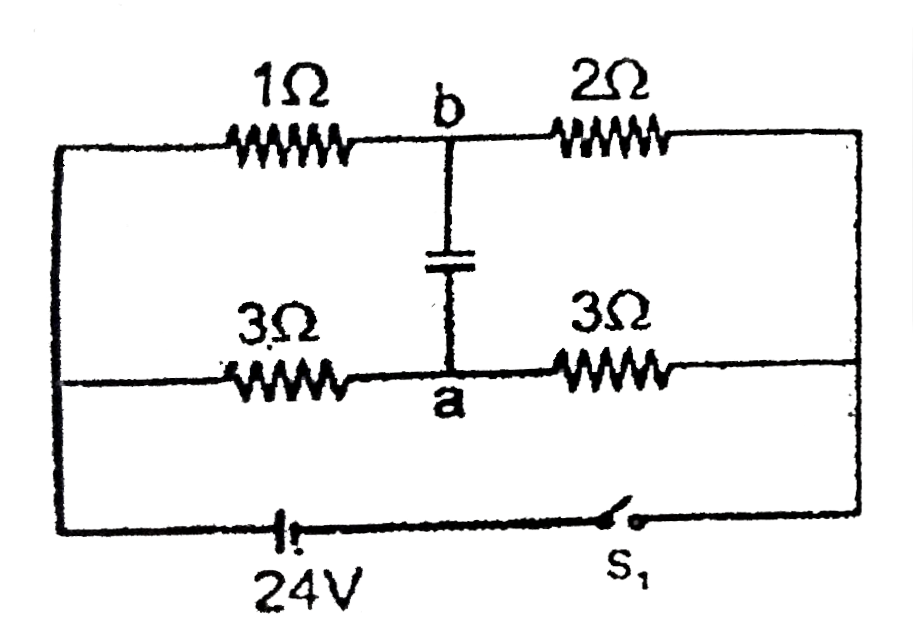Find heaty produced on closing the switch S

0.0002J
0.0005J
0.00075
zero
The correct Answer is:D
Step by step video, text & image solution for Find heaty produced on closing the switch S by Physics experts to help you in doubts & scoring excellent marks in Class 12 exams.
Updated on:21/07/2023Similar Questions
In the given diagram. Find the heart generated on closing the switch S (Initially the capacitor of capacitance C is unchanged ) -

View SolutionTwo capacitors C1andC2 are connected with two batteries of emf ε1 and ε2. The circuit components are connected with a switch S as shown in. Initially the switch is open and the capacitors are charged. Find the heat produced when switch S is closed.
 .
.
View Solution
Knowledge Check
Find heat produced in the capacitors after long time on closing the switch S
 A0.0002JB.0005JC0.00075JDzero
A0.0002JB.0005JC0.00075JDzeroFind power produced in 5Ω resistance in steady state after closing the switch S :
 A10 WB20 WC30 WDzero
A10 WB20 WC30 WDzeroFind the charge flown when the switch S is closed.
 AzeroBε0AdVC32ε0AdVDε0A2dV
AzeroBε0AdVC32ε0AdVDε0A2dV
Find heat produced in the circuit shown in figure on closing the switch S.

View SolutionInitally switch S1 is closed, after a long time, S1 is opened and S2 is closed. Find the heat produced in coil after long time.

View SolutionAs shown in diagram initial charge on capacitor is zreo . Now switch S1 is closed & it remains closed for a long time but S2 remains open . Now switch S1 is opened & switch S2 is closed at t=0, then after closing the switch S2 :

View SolutionFor the circuit shown in the diagram find the value of Va−Vb after long time closing the switch S1:

View SolutionWe have two capacitors C1andC2 of capacitance 12μF and 6μF respectively. As shown in the given circuit arrangement the two capacitors are joined to a power supply of 6 volts. Initially the switch S1 is closed but switch S2 is open. After some time, the switch S1 is opened and simultaneously switch S2 is closed.
Now answer the following questions :
The fractional loss in electrostatic energy of the arrangement after closing the switch S2 is
View Solution
